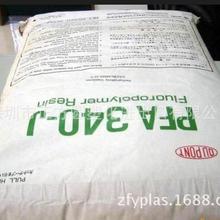In testimony to Congress this week, a pediatrician from Uvalde, Texas described the horrors he witnessed in his emergency room following the mass shooting at Robb Elementary School. First, an 11-year-old survivor who had smeared herself with blood in order to hide from the gunman. Then, two children who were “pulverized” and “decapitated” by the bullet rounds from the gunman’s military-grade DDM4 rifle. Americans who witnessed the Uvalde horrors from afar couldn’t see what the pediatrician did. Debate raged, as it had in the aftermath of previous school shootings, about whether we shouldbe shown images of those children’s bodies.
The argument in favor drew upon past examples of public anger in response to visual documentation of lynchings, government-sanctioned torture, and police brutality; in these contexts, sometimes, backlash did eventually lead to policy changes. But when it comes to school shootings, we’re no closer to an answer on whether to release photos of the carnage. The emotional response to any tragedy is compounded when children are involved; no one wantsto see innocence so cruelly destroyed. And how could such pictures affect young survivors, already traumatized by what they saw for themselves, and now dealing with public attention?
This week, incidentally, also marks the 50thanniversary of the publication of the “Napalm Girl” photo, one of the most shocking, lasting images from the Vietnam War. Snapped by 21-year-old Vietnamese photographer Nick Ut in the village of Trang Bàng, the picture shows a naked 9-year-old girl screaming, her body covered with burns, as she runs down a road alongside other terrified children. When the photo made its way to American news wires in June 1972, outlets like the Associated Press and New York Times hesitated to run it, citing concerns over its graphic and explicit nature. (The nudity was more of a question than the violence.)
AdvertisementUltimately, of course, they did print it. The photo won a Pulitzer Prize and was useful for protesters making the case for American withdrawal from Southeast Asia. It’s probably not the case, as has often been claimed, that the photo helped end the war or contributed to a sharp turn in public opinion; by that point, historic polling shows, Americans had already largely soured on the war, and the fall of Saigon was still years away.
Advertisement Advertisement AdvertisementOne of the reasons why the “should we show these photos?” debate feels so inconclusive is that it’s hard to know how to measure impact. Contemporaneous opinion polling may show one thing, but there are other metrics one could use to argue that the “Napalm Girl” image provided undeniable, inescapable proof of the conflict’s senseless destruction, and stuck in viewers’ minds long after the war’s conclusion. Time magazine listed it as part of its 100 Most Influential Photos of All Time, and British audiences of the History Channel voted it the most powerful photo of the last 50 years in a 2019 poll. And then there’s the more anecdotal evidence: Nick Ut said to NBC News in 2017 that Americans have told him the “Napalm Girl” photo convinced them not to enlist, after the draft ended in 1973.
AdvertisementEarlier this week, I had a chance to meet both Ut and the subject of this photograph, Phan Thi Kim Phúc, at an office in downtown Manhattan. To mark the photo’s jubilee, the two went on a tour, speaking to journalists and public officials, even meeting Pope Francis in Italy and presenting him with a framed print. The day I met them, they’d come from a visit to AP headquarters, where Kim Phúc viewed the original negative of the photo for the first time. “It bring me to tears,” she mentioned afterward.
AdvertisementWith that in mind, I asked her: What did it feel like, when she was younger, to be the subject of such a stark, controversial photograph?
Advertisement“As a child, first time I looked at that picture, I was so upset,” she responded. “I was so angry and I hated [Ut], because as a girl, I was really ashamed. I didn’t like that picture for a long time.”
AdvertisementBut there was no way for her to escape it, she explained. In postwar Vietnam, other children ostracized her for the scars she carried. Then, the government paraded her around the country as a propaganda symbol. The unrelenting physical and emotional pain gave rise to suicidal thoughts, until she turned to Christianity in the early 1980s, drawing (as she remembered it) upon her new faith to find strength. Later in the decade, she met her future husband while studying medicine in Cuba, and the Canadian government granted them both asylum. Finding “freedom” and love helped her persist, she said, and she even reconnected with Nick Ut, whom she now calls “uncle.” However, the real turning point in her thoughts on the photo came when she had children of her own.
Advertisement“How dare I let my child suffer like that little girl in the picture? I have to do something to protect them, to take care of them,” Phúc told me. “Do the best as a mother I can do. And not only for my baby, but all the children around the world.”
Advertisement AdvertisementNow, she says: “I look back at my picture, I realize that it’s a powerful gift for me, to do something to give back. I can do something meaningful, a purpose, as I’m still alive.” Nick Ut agrees as to his work’s purpose: “I thank God that I took that picture, and that [Kim Phúc and I] feel a friendship forever.”
Kim Phúc’s scars are still present—at one point in our conversation, she rolled her sleeve up to show me—but the worst torments are gone. Now, she works with her foundation to aid other children who’ve been brutalized by war and suffering.
AdvertisementPopular in News & Politics
- Sure Sounds Like the Supreme Court Is About to Give Trump a Big Win!
- Trump Is Trying Something New With the 2024 Campaign. It’s Smart—and Terrifying.
- We Can Learn a Lot From the Weird Crew That Keeps Showing Up to Trump’s Trial
- Did That Have to Happen at Columbia? No. Just Look at What Happened at Brown.
Some of the most affecting images and footage we’ve seen in recent years—from Syria, Palestine, Somalia, Yemen, the Southern border—has depicted injured, traumatized children. But ours is a reality-denying era, and these photos, when they’re inconvenient for certain political factions, aren’t accepted at face value. Ut and Kim Phúc know what it’s like to have their experience downplayed and mischaracterized—President Richard Nixon doubted their photo’s veracity, while his onetime opponent George McGovern mislabeled Kim Phúc’s wounds as being the fault of U.S. forces. (The bombers of her village were, in this case, South Vietnamese.) This wasn’t enough to discredit the photo, or keep it from becoming history. But we live in a transformed age now, as Nick Ut acknowledged. “The war today, like Ukraine, the pictures are the same,” he said. “But the social media different.” It takes mere seconds now to snap a pic and release it to the world, which was not the case when Ut was in Vietnam, as he marveled to me. But with the increased connectivity and speed comes a whole new set of possibilities: misleading editing practices, disinformation. Reactions like Nixon’s and McGovern’s are no longer unique.
Advertisement Advertisement AdvertisementSo, I asked Nick Ut and Kim Phúc, can there still be a photo from any of our most recent conflicts as iconic and piercing as the “Napalm Girl” shot? Does the moment now call for going even further than that photo did—to show what happens when weapons of war are turned on our own kids?
“I don’t want dead bodies of children,” Ut said, mentioning that he’d been assigned to photograph the aftermath of the Columbine massacre. “Pictures of children still alive, and family grieving—that, if I’m there, I do my job. I don’t want dead children.”
“I think the situation happen anywhere, any place, any time, there’s a need to record—to show the tragedy, the suffering of the people,” Kim Phúc told me. “Children in the school, they don’t do anything wrong, but that atrocity happened to them. … Whether it make you upset or not, the truth has to be witnessed.”
Tweet Share Share Comment








